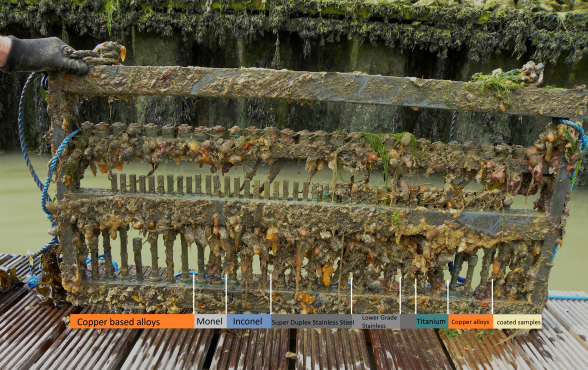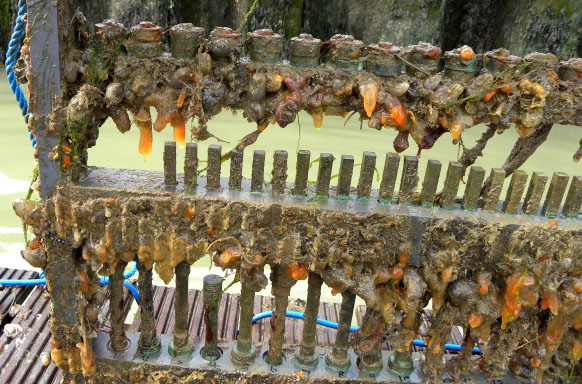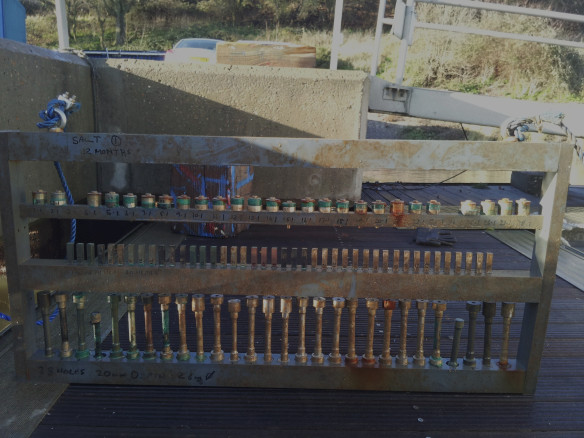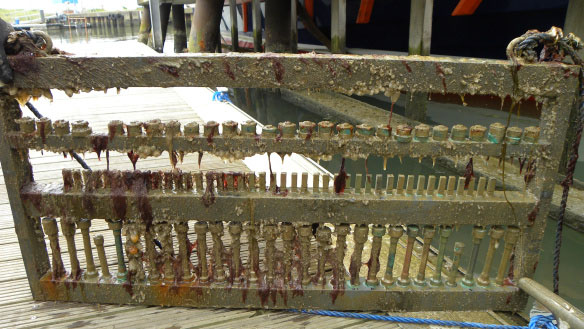Now 8 months in, our exciting corrosion research project is starting to illustrate very clearly just how well copper alloys withstand marine environment conditions over all other metals commonly used in marine environments
1) After 8 months of submersion, the rack at Shotley Marina (slow moving sea water) weighed over 50 kg and proved difficult to haul out of the water due to a colony of Sea Squirts latching on to the majority of the sample bars. It is apparent (see image below) that the copper alloy samples are the only exception, creating a window effect among the overgrown colony of Sea Squirts.

2) The rack at Levington Marina (fast moving sea water) is showing similar growth patterns to the one pictured above, the only considerable difference being in the diversity of marine life present. With 8 months elapsed since initial immersion, the Aluminium Bronze and Cupro-Nickels are still performing very well in this aggressive environment showing almost no sea growth compared to the rest of the heavily affected samples.Thewindow effect is clearly visible in the pictures below (bottom left toward the middle and bottom right), leaving no room for doubt when it comes to the impressive anti-corrosive properties of the cooper alloy specimens.
Our suite of Elite Marine Alloys is faring exceptionally well, demonstrating high anti bio-fouling properties: CAL CNC-1 (third from the left), CAL T-1000 (fourth from the left) and CAL T-800 (fifth from the right)

It is interesting to note that Inconel 625 and the Monel alloys are showing significant levels of biofouling compared to the Elite Marine Alloys and copper-based alloys. In the picture below, it is clear to see the increasing marine growth from the copper alloys on the left to the nickel alloys and Inconels on the right.

This is the only project that is giving a balanced appraisal through primary research of metals for the marine environment. It is important that engineers take note of the new information to ensure that the optimal material is specified at design stage for equipment expected to operate offshore. The racks will be reviewed monthly, with a full analysis to be conducted after 12 months at sea.






 United Kingdom
United Kingdom